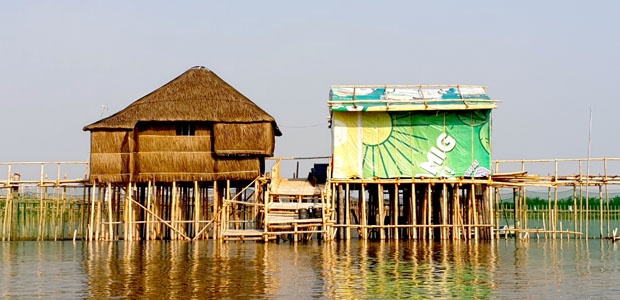When Houses Talk
The architecture of post-disaster housing reconstruction as discourse

The complexity, ambiguity, and lack of resources that characterize post-disaster housing reconstruction results in the field being one of the least successfully implemented aspects of disaster recovery, which, in turn, is one of the least understood aspects of disaster risk management. As the effects of natural hazards are magnified by planetary urbanization within the climate emergency, this research team believes in the urgency of bringing forward alternative ways of perceiving post-disaster housing reconstruction, in this case, on top of dealing with the perpetual flooding and sedimentation encountered by an estuarine island community.
The aim is to yield new insights into challenges of the field, as well as reveal underexplored ways of moving forward with homeowner-driven housing reconstruction. In contrast to technocratic ways of analyzing the challenges of disaster recovery, this proposed research aims to pilot methodological approaches for examining architectural practice in post-disaster housing reconstruction by drawing on the idea of ‘material registers’. Furthermore, the study intends to highlight the interrelationships of architectural and linguistic practices of individuals and families in housing sites that experienced a super typhoon, and how these can be understood between the junctures of design anthropology, critical architecture, linguistic anthropology, and material culture studies. The study poses the question: What lessons about post-disaster housing reconstruction can be gleaned by viewing architecture as discourse? The approach to be used will be informed by formulations in design anthropology, the anthropology of architecture, critical architecture, material culture studies and linguistic anthropology.
By examining post-Typhoon Glenda (international name: Rammasun) homeowner-driven housing reconstruction sites on an island in Manila Bay, this research hopes to pilot a methodology for understanding the ways in which residents design, modify, repurpose and use their dwellings as they recover from the effects of the typhoon. This could also lead to an understanding of how members of the community exhibit disaster resilience. Therefore, this study hopes to identify a process for understanding the intents and actions of individuals in disaster-affected communities relating to the rebuilding of their homes. Ultimately, the goal is to shed light on how community resilience and housing reconstruction programs might be designed in ways that better anticipate the needs and priorities of those affected by particular forms of disaster. Specifically, findings of the research will be applied to the housing and infrastructure module of an ongoing training program on Leadership for Community Resilience.

